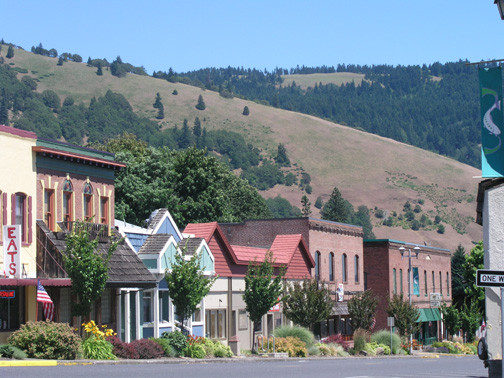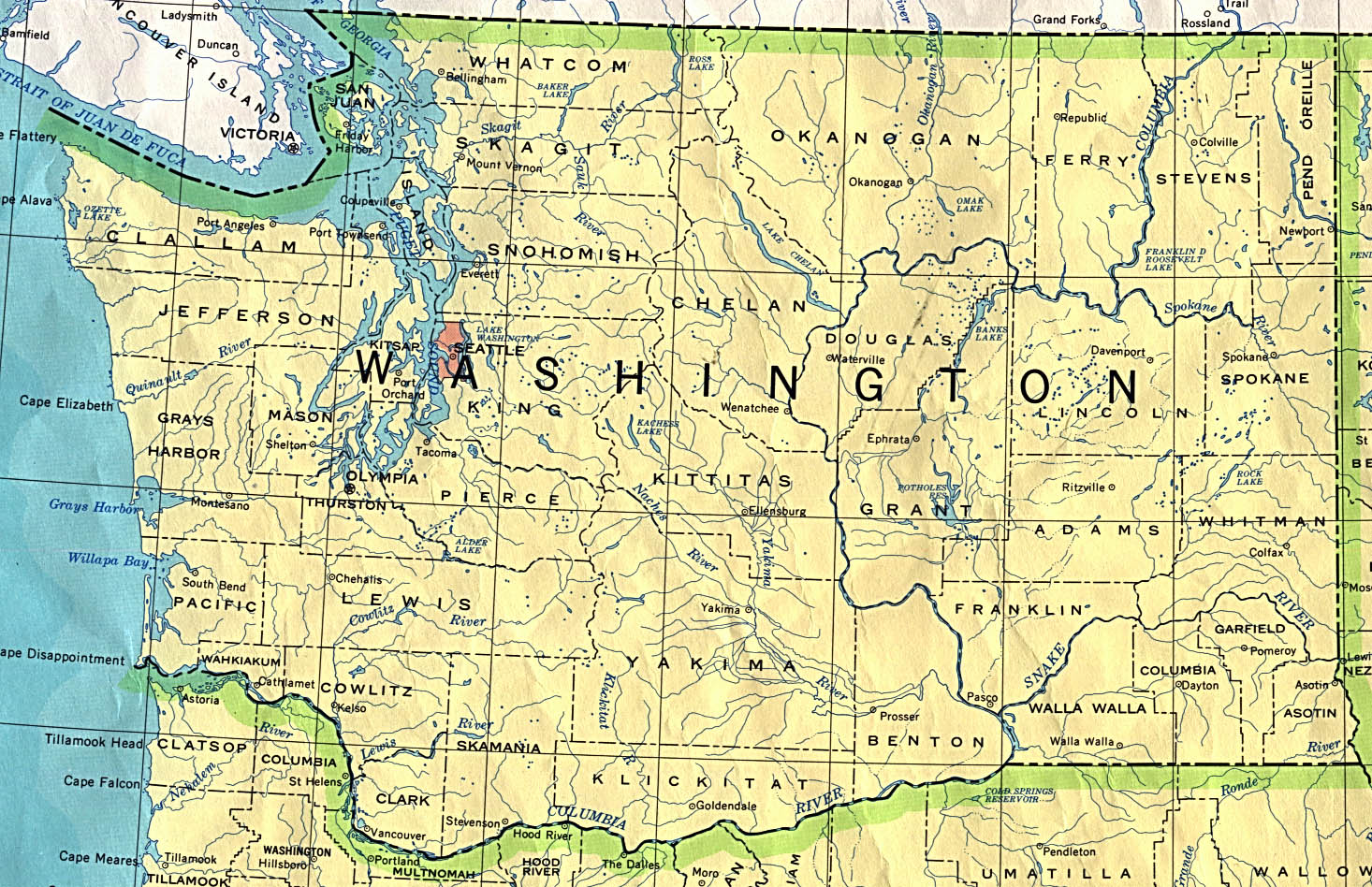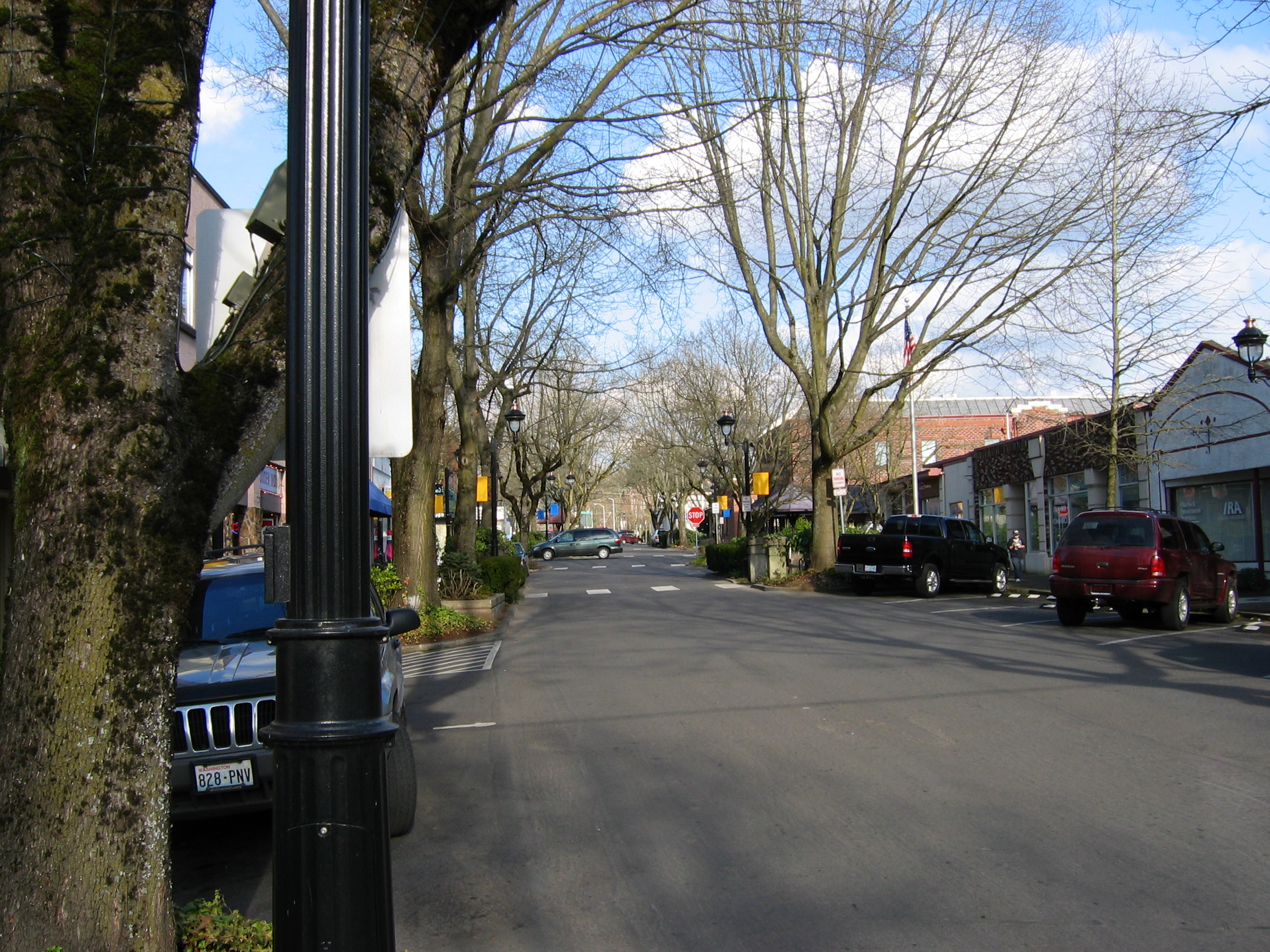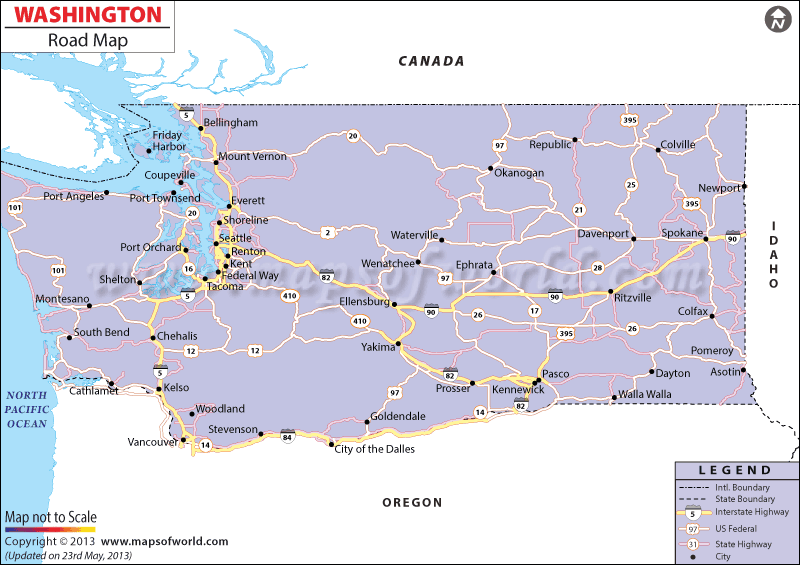Blue Highways: White Salmon and Appleton, Washington
Unfolding the Map
 Hey there...how you doing, baby? In this post William Least Heat-Moon (LHM) takes us on a little roadtrip into desire. So why don't you go get yourself into something more comfortable, put on a little mood music, pour some wine, turn the lights down low and light some candles, and we'll do some exploration, if you know what I mean. You know you want it. If you need some visual aids to get excited about where we're going, why don't you get clicking on my map to get that spark? And now, damn baby, you must be on fire because it's getting hot in here...
Hey there...how you doing, baby? In this post William Least Heat-Moon (LHM) takes us on a little roadtrip into desire. So why don't you go get yourself into something more comfortable, put on a little mood music, pour some wine, turn the lights down low and light some candles, and we'll do some exploration, if you know what I mean. You know you want it. If you need some visual aids to get excited about where we're going, why don't you get clicking on my map to get that spark? And now, damn baby, you must be on fire because it's getting hot in here...
Book Quotes
"During lunch in White Salmon, I noticed the map showed a town up on the northern plateau almost in the shadow of Mount Adams called Liberty Bond. No question about where to go next....
"I tried to get directions in Appleton, a fading place of three or four fading houses and a fading school...No one about...Then a sudden clatter of hooves and a long 'Hallooo!' A horse whickered as a woman reined up at my window....
"'I'm looking for Liberty Bond.'
"She had long, black hair loose over her shoulders. Muscular and pretty. About thirty-five. Very pretty.
"'It's gone. Fallen down....All picked over and not a doorknob left....Afraid you're too late for that one.'
"'How about taking me home to the ranch?'
"She laughed. 'What've you got in mind?' For a moment I saw a ranch-house parlor, low light through shades, the glow of whiskey in tumblers, a deep cleave and merge of thigh. She smiled. 'Too late there too.'"
Blue Highways: Part 6, Chapter 7
 Town of White Salmon. Photo by "Michelle" and posted at City-Data.com. Click on photo to go to host site.White Salmon and Appleton, Washington
Town of White Salmon. Photo by "Michelle" and posted at City-Data.com. Click on photo to go to host site.White Salmon and Appleton, Washington
Poor LHM. As we travel alongside him in the state of Washington, probably around the halfway point or just past halfway in his journey, one might wonder what was wrong with him if he had not gotten lonely for romantic companionship at some time. We know from earlier passages in Blue Highways that he has left a marriage in Missouri after it went sour and that this trip has been, in part, a way to escape his situation. It is also a journey to reconnect with himself and with the concept of America. We also know that at times on the trip he has been desperately lonely. Twice, at least, he has tried to contact his wife, whom he refers to as The Cherokee, and at various points along the earlier parts of his trip he hoped that she might try to contact him or leave a message for him in some way. The only time he made some brief contact was when he was in Corvallis, Oregon and it left him feeling even more lonely when she asked to call him back instead of talking to him.
So should we be surprised when a siren on a horse, whose prettiness he takes pains to describe, stirs romantic and sexual longings within him? Should we be surprised that after traveling, at this point probably around 7,000 miles, that he would hope for "a deep cleave and merge of thigh?"
I am writing this post about desire, because we all face it throughout our lives and we all succumb to it in one way or another. Desire might be the unifying theme that is carried throughout cultures and throughout time in human experience. We are surrounded by the objects of our desires daily, whether it's the attractive person walking by on the street that makes you look, the great looking car in the parking lot, the woman trying to get your attention or the man hitting on you in the bar, a beautiful piece of jewelry in the store window, or the song about someone else's desire that awakens your own longings. Desire is ever-present and yet must be balanced like everything in life. You may desire your friend's wife, or the guy that you run into at the copy machine every morning, but you make the decision to curb your desire in order to maintain social harmony. You may desperately want that $1000 dress, or the Harley-Davidson motorcycle, but you forego these temptations in order to feed yourself or your family.
We live and struggle with our desires daily. Some are lucky enough to pour them out in creativity. When you read a great novel, see a great work of art, watch a great performance, you are often seeing the power of desire channeled into something else of equally great beauty and value. The drive of desire is the drive of life and connects us with all living things and to aspects of ourselves that we would otherwise only dimly notice. The most successful human endeavors tap our minds and rechannel desire. Religion is very good at this, often redirecting the desires of its most fervent adherents toward enlightenment, salvation, community, faith, discipline, and all the other things that religion offers. It doesn't have to be religion - politics, art, business, and even leisure dip into the wellspring of desire.
Capitalism works as an economic system, and faces it's biggest problems, because it is based on desire. People getting what they desire in exchange for their labor or their capital is at the heart of capitalism. Desire causes people to work harder so that they can make more money and achieve what they desire - including snaring a mate to meet the more fundamental desires. Capitalists attempt to make more money partly to get what they desire and attract those they desire. Everyone working to get what they desire leads to a balance that Adam Smith called "the Invisible Hand." Yet if the balance goes awry, and it becomes harder for many to achieve their desires and accumulation begins to favor a minority, then capitalism itself can be threatened. Perceptions of such an imbalance is driving the current Occupy protests pitting the "99%" against the "1%".
In the end, though, desire is about connection, no matter how focused or abstract the desire is. Why accumulate more things that you can't possibly use yourself? Because you want them to create connections to others. Why write, draw, paint, succeed in business, join a religion, or even just be a person of leisure? So that you can reach out and touch others who will respond to your activities and also touch you.
This blog grew out of desire - a desire to reconnect with and know myself better, as well as a desire to see if any of what I have to share would connect with anyone else. It has also helped me channel my activities into positive and life-giving activities rather than unhealthy activities that would touch into the dark sides of my desires. There is a dark side to everyone's desires. That dark side can take one down a path of pain, misery, obsession, guilt, and shame. I have been there once or twice. Such a road is the stuff that makes film noir's so uncomfortably enjoyable as they delve into the dark and seamy side of life.
There are also consequences to acting upon our desires, and we have to be ready for them. I just saw a Twilight Zone episode, The Man in the Bottle, that very effectively showed what happens when we are able to get what we desire and the unexpected results that may occur. What if LHM had been able to act upon his desire, if the pretty woman had been available, and had gone back to the ranch with her? His trip might have hung in the balance. He might have had to admit to her that he was just out for a quick romantic stop but no long-term relationship, and that may or may not have had consequences. Or maybe, he might have been delayed in restarting his trip. Or he might not have finished it at all. There may have been no Blue Highways. Ultimately, LHM took the energy of his desires seething inside him and produced his book. In doing so, he reached a connection with many of us.
Musical Interlude
Speaking of consequences of desire, there are a lot of mythological stories and warnings about what happens to men overcome with desire. The Greeks embodied the essence of desire into the Sirens, a group of mythological women with a sweet yet sad song that drove men to anguish. Mariners were induced to shipwrecks by the Sirens voices and survivors would later die of thirst and starvation listening to the exclusion of all else. In The Odyssey, Odysseus tells his men to stop their ears and lash him to the mast of the ship so that he could hear the Sirens' song. They were to keep him bound to the mast no matter how much he begged until the ship was safely away. In the 2000 movie O Brother Where Art Thou, the Coen Brothers adaptation of The Odyssey set in Mississippi, Ulysses, Pete and Delmar run across some sirens at a river that end in consequences imagined (at first) and real (later). That will be your musical interlude for today - the "sireens" of O Brother Where Art Thou. And in case any male readers are overcome with desire for the ladies who play the sirens, the actresses are Mia Tate, Musetta Vander, and Christy Taylor.
If you want to know more about White Salmon and Appleton
GoNorthwest.com: White Salmon
White Salmon Enterprise (newspaper)
Wikipedia: Appleton
Wikipedia: White Salmon
Next up: Pitt, Washington




 Friday, October 28, 2011 at 9:49AM
Friday, October 28, 2011 at 9:49AM







